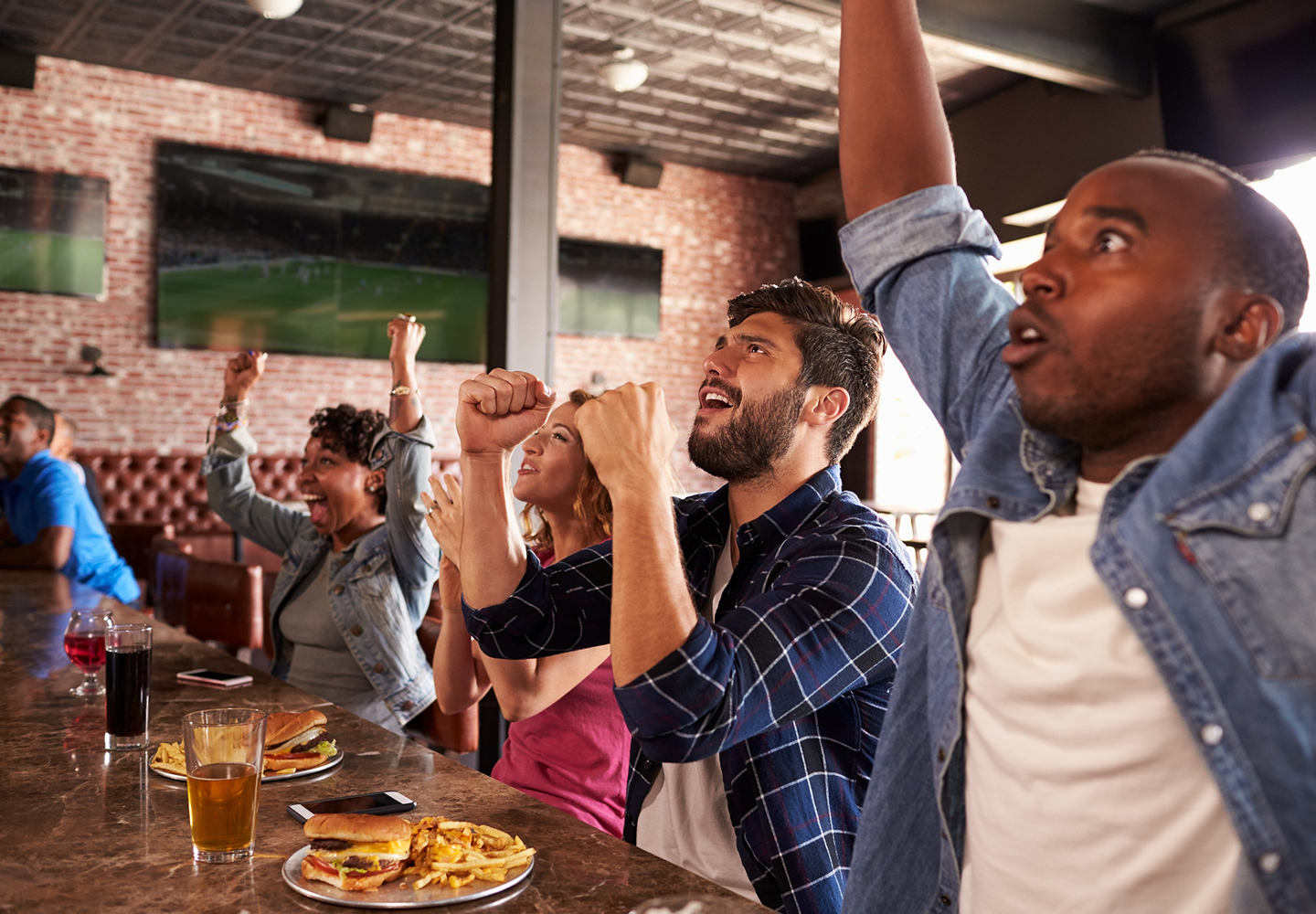 In a big announcement, Turner Sports and CNN have
established a long term contract with Nielsen’s
National Out-Of-Home Reporting Service, ensuring that standardized news and
sports Out Of Home viewing can be seamlessly integrated with Nielsen’s in-home
currency measurement.
In a big announcement, Turner Sports and CNN have
established a long term contract with Nielsen’s
National Out-Of-Home Reporting Service, ensuring that standardized news and
sports Out Of Home viewing can be seamlessly integrated with Nielsen’s in-home
currency measurement.
In fact, according to Jay Leon, Vice President, Turner
Sports Research, “Turner has been subscribing to custom out of home measurement
since 2010, first with Arbitron and then with Nielsen. We were the first to
harness the power of out of home viewing.” Robin Garfield, Senior Vice
President of Research and Scheduling, CNN, added, ”CNN is the first news
network to subscribe to this Nielsen service and we are the first to offer a
standard guarantee for OOH in 2014.”
I sat down with Leon and Garfield to gauge the value and
impact of this new data:
Charlene Weisler: Why
do this study? From a news and a sports perspective, what makes out-of-home (OOH)
measurement compelling?
Robin Garfield: We are in rapidly a changing time. People
are highly engaged in following what is going on in the news and how it is
unfolding. OOH, while always important, is even more so now because people
follow the news when they are out of the home. The environment is so dynamic
that people want to stay up to date.
Jay Leon: OOH is another platform for viewership that has
not been extensively measured in the past. This is the first time that there is
a syndicated Nielsen service for out-of-home and it is very important for
sports in particular.
Charlene Weisler; Are
there any data points you can point to that supports the impact of out-of-home
on news and sports viewership?
Robin Garfield: We have been studying the impact of OOH for
a long time with a custom study. Now, with syndicated data, in 2Q, we saw a
tremendous lift for an event like the Comey trial: +18% for Adults 25-54 above
our Live +7 delivery. That is a significant, material increase in our audience.
The greatest impact is on time of day delivery – especially Daytime - when
people are out of home. We are eager to understand where and how we are
reaching people.
Jay Leon: From what we have seen so far, the results are
very compelling. Those who watch sports out of home are very engaged fans who are
watching for different reasons. Sometimes they may not be able to see the game
at home or the game is not available in their neighborhood. In these cases, fans
are looking elsewhere. And then there is also the social aspect of watching a
game at a bar, for example which makes the viewing experience special.
OOH offers tremendous viewership lift. With the Final Four
there was +21% lift over in-home National People Meter currency delivery. That
means that for every 100 in-home viewers, there was an additional 21 viewers
out of home. For the All Star Game it was +17%. Baseball Play-offs, +14%. Bars
and restaurants come to mind for OOH viewing, but there is also work. With the
NCAA tour, the games were broadcast at 12n which enabled people to view during
their lunch hour. Also, viewing in other peoples’ homes was traditionally
counted by Nielsen people meters. Now these OOH guests are subtracted from the
people meters so as not to double-count. Frankly, I think guest viewing has
historically been under counted because the meter technology requires button
pushing. So this is a better way to more accurately count guest viewing in
other homes.
Charlene Weisler: What
should advertisers be considering when evaluating the impact of OOH as part of
total video viewership across platforms and devices?
Robin Garfield: Advertisers are interested in the ad
effectiveness of the programming environment. Research proves that the more
engaged the viewer, the more effective the advertising. So it is all about
engagement - The kinds of people you reach throughout the day no matter what
location or time of day will be engaged in OOH. These viewers are desirable
because they have mobility which makes them younger. They are an attractive
audience in an ideal state of mind.
Jay Leon: They should look at the lift metric as well as the
social aspect of out of home viewing. These viewers are not looking a second
screen; They are focused on the game and the discussion of what is happening on
screen. Also, lift tends to be higher among younger adult viewers.
Charlene Weisler: How
do OOH viewers generally compare to in home viewers?
Robin Garfield: OOH viewers, because they have mobility,
tend to be younger. And think about where you can capture OOH usage – the gym,
restaurants, airports, bars. Those are the kinds of people who are spending
money, spending time with other people and are highly engaged. They are the
optimal consumer.
Jay Leon: The composition is younger and a higher
composition of women viewing out of home sports than at home. I think it is
because of the social aspect.
This article first appeared in www.MediaVillage.com
No comments:
Post a Comment